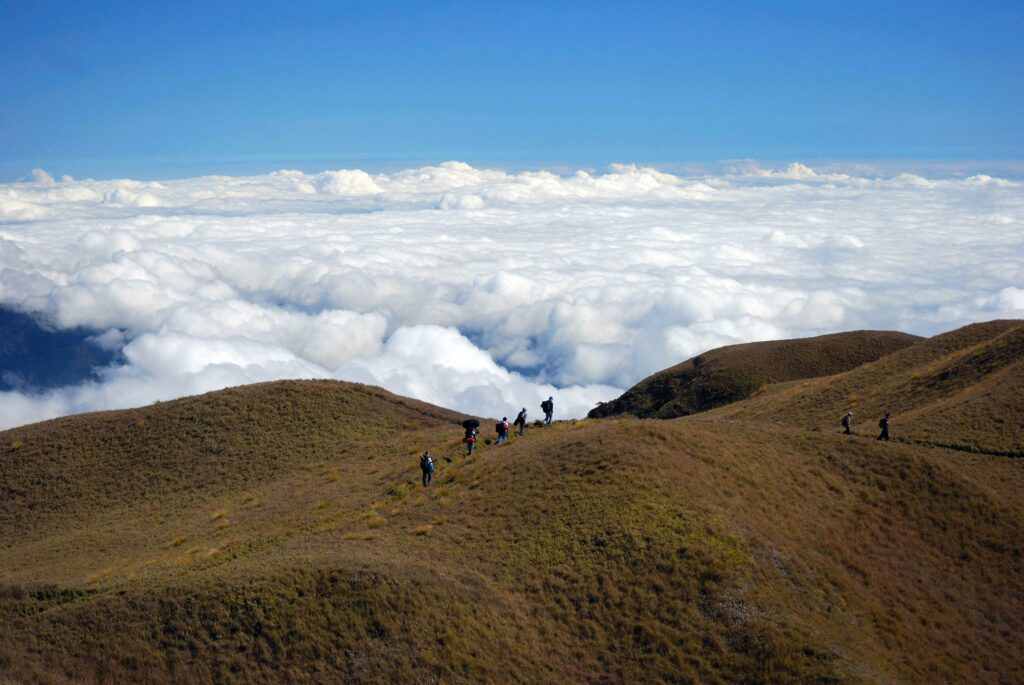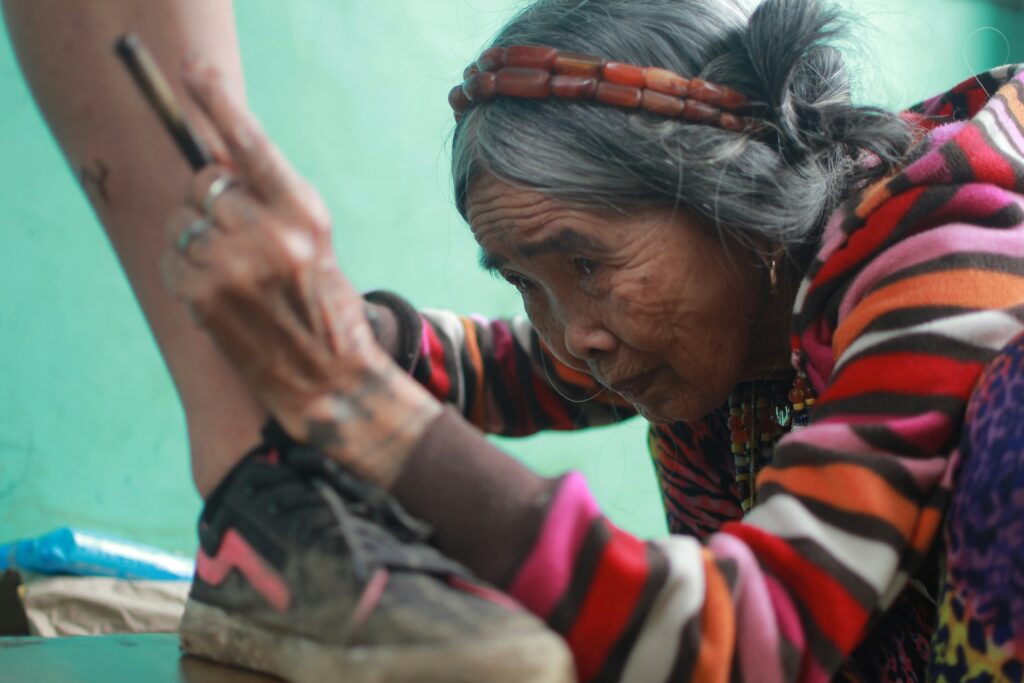
Best Hiking Trails in the Philippines: An Adventurer’s Guide
Posted in Adventure, Hiking and Trails
Introduction to Hiking in the Philippines

The Philippines, an archipelago comprising over 7,000 islands, stands as a premier destination for hiking enthusiasts worldwide. The country’s diverse landscapes offer a unique blend of natural beauty and cultural richness, making it an unparalleled haven for adventurers. From the verdant forests of Luzon to the volcanic mountains of Visayas and the serene coastal trails of Mindanao, the Philippines presents a myriad of hiking opportunities tailored to varying skill levels and preferences.
One of the most captivating aspects of hiking in the Philippines is the sheer variety of terrains. Enthusiasts can explore dense jungles teeming with endemic wildlife, ascend majestic peaks offering panoramic views of the archipelago, or traverse along coastal paths where the sight of turquoise waters meets the horizon. This geographical diversity ensures that every hike is a distinct experience, catering to both novice hikers and seasoned trekkers.
In addition to its natural wonders, the cultural richness of the Philippines enhances the hiking experience. Trails often wind through remote villages where hikers can interact with indigenous communities, gaining insights into their traditional lifestyles and customs. This cultural immersion adds a profound layer to the adventure, transforming each trek into a journey through both nature and heritage.
Moreover, the Philippines‘ tropical climate allows for year-round hiking, though certain seasons may offer more favorable conditions. The dry season, typically from November to April, is the most popular time for hiking, providing clear skies and cooler temperatures. However, each season brings its own charm, with the rainy months revealing lush, green landscapes and vibrant waterfalls.
Ultimately, the Philippines is not just a destination; it is a tapestry of experiences woven from its rich biodiversity and cultural heritage. For the avid hiker, this Southeast Asian gem promises an adventure that is as exhilarating as it is enriching.
Hiking Trails Essential Gear and Preparations
Embarking on a hiking adventure in the Philippines requires meticulous planning and the right gear to ensure a safe and enjoyable experience. First and foremost, investing in appropriate footwear is crucial. Hiking boots or trail shoes that offer excellent grip and ankle support are essential to navigate the diverse terrains, from muddy paths to rocky ascents.
Clothing should be lightweight, moisture-wicking, and suitable for tropical conditions. Quick-dry shirts, convertible pants, and breathable layers are recommended. Additionally, carrying a rain jacket or poncho is advisable due to the unpredictable weather patterns in the Philippines. A wide-brimmed hat and sunglasses will also protect you from the intense sun.
Hydration is key to maintaining energy levels during your hike. A hydration pack or water bottles with a combined capacity of at least 2-3 liters will help you stay hydrated. Including electrolyte tablets or powders can also aid in replenishing essential minerals lost through sweat.
Navigation tools such as a detailed map, compass, or GPS device are vital for unfamiliar trails. While many popular hiking routes are well-marked, having a reliable navigation tool can prevent you from getting lost. It’s also wise to inform someone of your hiking plan and expected return time.
A well-stocked first-aid kit is indispensable. It should include bandages, antiseptic wipes, blister treatments, pain relievers, and any personal medications. Knowledge of basic first-aid procedures can be a lifesaver in remote areas where medical help might not be readily available.
Physical preparation cannot be overstated. Engaging in regular cardio and strength training exercises helps build stamina and resilience. Understanding the difficulty level of the trail is equally important. Beginners should start with easier trails and gradually progress to more challenging ones.
Researching weather conditions before your hike is imperative. The Philippines experiences a tropical climate with distinct wet and dry seasons. Planning your hike during the dry season can enhance safety and enjoyment. However, always be prepared for sudden weather changes.
For multi-day hikes, packing light but smart is essential. Bring only the necessities such as a lightweight tent, sleeping bag, and compact cooking gear. Prioritize items that serve multiple purposes and avoid overpacking to reduce the load on your back.
By adhering to these guidelines and making informed choices, you can ensure a rewarding hiking experience in the beautiful landscapes of the Philippines.
Top Hiking Trails in Luzon
Luzon, the largest island in the Philippines, is a treasure trove of stunning hiking trails that cater to both novice and experienced hikers. Among these, Mount Pulag and Mount Pinatubo stand out for their unique landscapes and unforgettable experiences.
Mount Pulag, the third highest mountain in the Philippines, is renowned for its breathtaking ‘sea of clouds.’ This trail, located in the Cordillera Range, is of moderate difficulty, making it accessible to hikers with varying levels of experience. The trek to the summit, which stands at 2,926 meters above sea level, typically takes about 8-10 hours round trip. Hikers are rewarded with panoramic views of the surrounding mountains and a mesmerizing blanket of clouds at dawn. The trail passes through mossy forests, dwarf bamboo groves, and grasslands, offering diverse scenery along the way.
Mount Pinatubo, another iconic hike in Luzon, is famous for its spectacular crater lake. This trail, situated on the boundaries of Zambales, Tarlac, and Pampanga, is relatively easy and suitable for beginners. The hike to the crater lake takes approximately 2-3 hours each way. The landscape is characterized by lahar fields, riverbeds, and volcanic ash deposits, remnants of the devastating 1991 eruption. Upon reaching the crater, hikers are greeted with the sight of a turquoise lake surrounded by towering cliffs, providing a stark contrast to the arid terrain below.
Both Mount Pulag and Mount Pinatubo offer unique hiking experiences that highlight the natural beauty of Luzon. Whether you’re chasing the ethereal sea of clouds atop Mount Pulag or marveling at the otherworldly crater lake of Mount Pinatubo, these trails promise adventure and awe-inspiring views that are truly worth the effort.
Exhilarating Hikes in the Visayas Region
The Visayas region of the Philippines offers a plethora of exhilarating hiking trails that cater to adventure seekers and nature lovers alike. One of the most renowned trails is Osmeña Peak in Cebu, standing at 1,013 meters above sea level. Known for its jagged, rocky formations and panoramic views of the surrounding islands and the sea, Osmeña Peak provides a moderate hiking experience suitable for both novice and seasoned hikers. The terrain is primarily composed of grassy slopes and rocky trails, making it a relatively easy climb that rewards hikers with breathtaking scenery at the summit.
Another iconic hiking destination in the Visayas is the Chocolate Hills in Bohol. Unlike the typical dense forest trails, the Chocolate Hills offer a unique geological wonder with over 1,200 conical hills spread across the landscape. These hills are particularly fascinating during the dry season when they turn a rich brown color, resembling chocolate mounds. The hike around the Chocolate Hills is relatively easy and provides numerous vantage points for photography and sightseeing. Historically, the Chocolate Hills are steeped in local folklore; one popular legend speaks of two giants who fought for days, hurling rocks and boulders at each other, and eventually made peace, leaving behind the hills as a testament to their battle.
Both Osmeña Peak and the Chocolate Hills are not just natural wonders but also hold cultural and historical significance. Osmeña Peak, named after the prominent Osmeña family of Cebu, is a symbol of local pride and heritage. The Chocolate Hills, on the other hand, have been declared the Philippines’ third National Geological Monument and are considered one of the country’s most famous landmarks. These trails offer more than just physical challenges; they provide a rich tapestry of nature, history, and culture that enhances the hiking experience in the Visayas region.
Exploring these trails allows hikers to connect with the natural beauty and cultural richness of the Visayas, making each hike a memorable adventure. Whether you seek the thrill of summiting a peak or the wonder of unique geological formations, the Visayas region has something to offer every hiking enthusiast.
Mindanao’s Hidden Hiking Gems
Mindanao, often overshadowed by more tourist-heavy regions, offers some of the most breathtaking and less-explored hiking trails in the Philippines. Among these, Mount Apo stands as the highest peak in the country, reaching an impressive 2,954 meters above sea level. The trek to Mount Apo is not for the faint-hearted, requiring a good level of fitness and preparation. Hikers are rewarded with stunning vistas, diverse ecosystems, and the chance to encounter unique flora and fauna, such as the Philippine eagle, one of the world’s largest and rarest eagles.
Another captivating destination in Mindanao is Lake Holon. Nestled within the crater of an extinct volcano, this serene lake is often considered a hidden paradise. The journey to Lake Holon can be challenging due to its remote location, but the experience of pristine waters and tranquil surroundings makes it worthwhile. The trail to Lake Holon is lined with lush greenery, offering numerous opportunities for nature enthusiasts to observe endemic plant species and wildlife.
The remoteness of these hiking trails in Mindanao necessitates thorough preparation. Hikers should be equipped with appropriate gear, sufficient supplies, and a reliable guide familiar with the terrain. Additionally, respecting local communities and their customs is paramount. Many of these areas are home to indigenous groups, and showing respect for their traditions and lands is crucial for fostering positive relationships and ensuring the continued preservation of these natural wonders.
Environmental conservation efforts are also essential when exploring Mindanao’s hidden hiking gems. Hikers are encouraged to practice the principles of Leave No Trace, minimizing their impact on the environment. This includes carrying out all trash, avoiding the disturbance of wildlife, and sticking to established trails to prevent soil erosion and habitat destruction. By prioritizing environmental stewardship, adventurers can help maintain the pristine beauty of Mindanao’s hiking trails for future generations to enjoy.
Cultural and Historical Insights Along the Trails
The Philippines, with its diverse landscapes, offers more than just scenic beauty on its hiking trails. As adventurers traverse these paths, they are often introduced to the rich cultural and historical tapestry that defines the archipelago. Ancient tribal communities, historical landmarks, and enduring cultural traditions are interwoven with the natural splendor, providing a holistic experience beyond the physical endeavor.
One notable aspect of hiking in the Philippines is the opportunity to encounter various indigenous tribes. In the northern regions, hikers in the Cordillera Mountains may come across the Ifugao people, renowned for their intricate rice terraces. These terraces, often referred to as the “Eighth Wonder of the World,” are a testament to the Ifugao’s ingenuity and deep connection to the land. Similarly, in Mindanao, the trails may lead to the territories of the Lumad, where one can witness their traditional ways of life and vibrant festivals.
Historical landmarks also punctuate many trails, offering a glimpse into the Philippines’ storied past. For instance, the trails around Mount Samat in Bataan not only present a challenging hike but also a chance to visit the Dambana ng Kagitingan (Shrine of Valor), commemorating the bravery of Filipino and American soldiers during World War II. Similarly, trekking in the Visayas might bring one close to the sites of the historic Balangiga Encounter, adding a layer of historical depth to the adventure.
Cultural traditions and festivals play a significant role in enhancing the hiking experience. Timing a hike to coincide with local events can provide a unique cultural immersion. The Kaamulan Festival in Bukidnon, for example, celebrates the customs and traditions of the seven ethnic tribes in the region and is a vibrant spectacle of indigenous culture. In the mountainous areas of Luzon, the Panagbenga Festival in Baguio, also known as the Flower Festival, showcases the region’s floral heritage and offers a lively backdrop to any hiking expedition.
These cultural and historical insights add a rich layer to the hiking experience in the Philippines, making each trail not just a journey through nature, but also a journey through time and tradition.
Safety Tips and Environmental Responsibility
When embarking on a hiking adventure in the Philippines, ensuring personal safety and environmental preservation are paramount. The country’s diverse terrain and unpredictable weather demand thorough preparation. Hikers should always check weather forecasts before setting out, as conditions can change rapidly, especially in mountainous regions. Packing appropriate gear, such as waterproof clothing, sturdy footwear, and sufficient food and water, is crucial for handling sudden weather changes.
Wildlife encounters are another consideration. While the Philippines is home to a variety of wildlife, including snakes and insects, most animals are not aggressive if left undisturbed. Hikers should stay on marked trails to minimize unexpected encounters and always be aware of their surroundings. Carrying a basic first-aid kit and knowing how to administer first aid for bites or stings can enhance preparedness for such situations.
In case of emergencies, having a reliable means of communication, such as a fully charged mobile phone or a satellite device, is essential. Sharing your itinerary with a friend or family member and knowing the nearest medical facilities can provide additional layers of security. Familiarizing oneself with basic navigation skills and carrying physical maps, along with GPS devices, can prevent getting lost in remote areas.
Beyond personal safety, hikers have a responsibility to preserve the natural beauty of the trails. Adhering to the Leave No Trace principles is fundamental. This includes packing out all trash, minimizing campfire impact, and respecting wildlife and plant life. By following these guidelines, hikers help maintain the pristine condition of these environments for future visitors.
Furthermore, hikers can contribute to conservation efforts by participating in local clean-up drives or supporting organizations dedicated to environmental protection. Opting for eco-friendly products and reducing plastic use are additional ways to promote sustainable tourism. By being mindful of these practices, hikers not only ensure their safety but also play a crucial role in conserving the diverse ecosystems that make hiking in the Philippines a unique and rewarding experience.
Conclusion: Embracing the Adventure
Embarking on a hiking journey through the Philippines is more than just a physical endeavor; it is an immersive experience that connects adventurers with the breathtaking natural landscapes, rich cultural heritage, and the profound tranquility that the country’s trails have to offer. Whether traversing the verdant peaks of Mount Pulag or exploring the lush, unspoiled paths of Mount Apo, each hike unveils a unique story and offers a fresh perspective on the beauty of the Philippines.
Hiking in the Philippines is a gateway to discovering hidden gems that are often inaccessible by conventional means. It provides an unparalleled opportunity to encounter diverse ecosystems, from dense tropical forests to serene coastal vistas. The trails not only challenge one’s physical limits but also offer a chance to pause and appreciate the intricate wonders of nature. Each step taken on these paths brings hikers closer to a deeper understanding of the environment and themselves.
Moreover, the Philippines’ hiking trails are steeped in cultural significance, offering glimpses into the lives and traditions of indigenous communities that have thrived in these regions for centuries. Engaging with the local culture enriches the hiking experience, providing a fuller, more meaningful adventure. It’s a chance to learn and grow, fostering a sense of respect and admiration for the land and its people.
For those seeking to rekindle their sense of adventure, the Philippines presents an inviting canvas of exploration and discovery. The country’s trails beckon with promises of awe-inspiring vistas, challenging terrains, and the serenity of untouched wilderness. So lace up your hiking boots, pack your essentials, and set out to explore the Philippines’ stunning trails. Embrace the adventure, and let it transform you, revealing the hidden treasures of both the land and your own spirit.

Go Explore Philippines
Welcome to GoExplorePhilippines.com, your go-to guide for exploring the Philippines. Discover tips, travel guides, and stories about the stunning landscapes, vibrant culture, and delicious cuisine of Luzon, Visayas, Mindanao, and beyond. Join us on an adventure to uncover the hidden gems of the Philippines!











